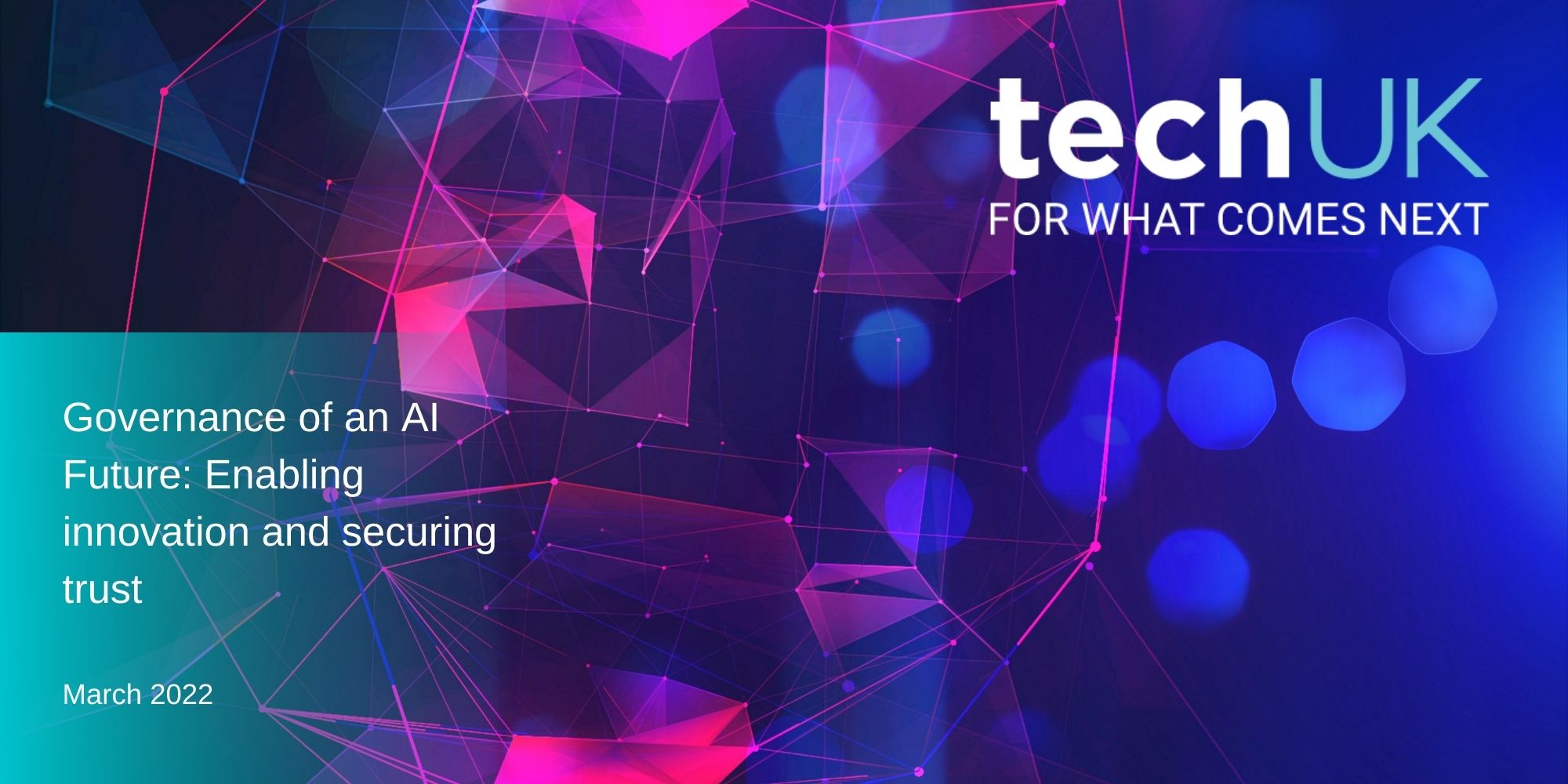Report
Governance for an AI future
In collaboration with its members, techUK has summarised four top priorities for a successful AI governance regime in the UK.
The UK is among the global leaders of AI, ranking highly in international comparisons of peer-reviewed publications and private investment.
AI technologies have the potential to drive economic growth, help improve many of the services we interact with daily and even contribute to solving some of the most complex social and environmental challenges facing the modern world.
Yet, a recent global poll found that the population of Great Britain are among the most sceptical of AI use, with only 35% saying they trust a company using AI as much as they trust a company which does not.
One way to help secure greater public trust is by adopting a clear and transparent approach to AI governance, which facilitates informed engagement. In the National AI Strategy published last year, the government established that a governance regime which “supports scientists, researchers and entrepreneurs while ensuring consumer and citizen confidence in AI technologies” is fundamental to securing the UK’s ongoing position as a global AI superpower. The strategy also announced that the government is preparing a white paper that is expected to set out its chosen path for the UK’s future AI governance framework.
To support this work, techUK has prepared this short paper setting out what we believe must be key elements included in the white paper if we are to a build proportionate, innovation-friendly and effective AI governance regime. techUK encourages the government to:
- Take a risk-based approach; tier AI governance requirements by the estimated level of risk posed by a given AI model or application, informed by clear criteria and categories.
- Consider the entire AI lifecycle; clarify at what stages, from AI planning and procurement to ongoing use, risks can reasonably be expected to be addressed.
- Encourage and oversee the development of an effective AI assurance market; work with industry to develop consistent and transparent requirements catering to different levels of risks and AI lifecycle stages.
- Acknowledge the role of existing regulation; ensure that any potential new regulation or governance mechanisms do not replicate or contradict existing regulation.




